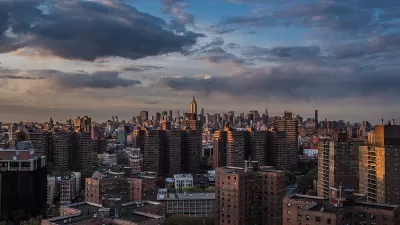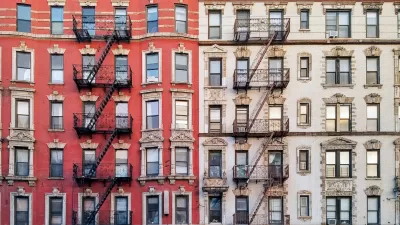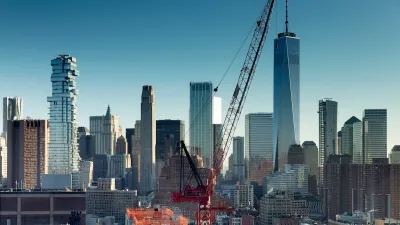The region has taken some steps to address the critical housing shortage, but alleviating the crisis requires a more comprehensive, statewide effort to build new housing, increase affordability, and prevent displacement.

New York City is famously unaffordable, and a lack of housing in the surrounding suburbs is exacerbating the crisis, writes Annemarie Gray in City and State NY. “NYU’s Furman Center found that ‘New York’s suburbs are failing to build any significant amount of housing,’ as Long Island permitted barely 3,000 new homes per year over the last two decades, while Westchester and the Hudson Valley permitted under 5,000 new homes per year.”
Put simply, we need a breakthrough on a comprehensive statewide strategy that sets clear expectations for where and how much we need to build housing, with every neighborhood, county, and town playing its part. We need mechanisms to greenlight projects that clearly deserve swift approval, so they don’t get slowed or blocked by political battles or redundant reviews.
According to Gray, the contentious politics of building new housing in the region are starting to shift as the crisis grows more dire. “Under the weight of crushing rents, it’s becoming good politics for elected officials to get to yes on housing.”
But “The past year’s housing victories amount to a drop in the bucket of what’s needed,” Gray asserts. “New York needs a holistic approach to addressing housing opportunity that puts rapidly increasing supply at the center, while simultaneously protecting existing tenants, fighting housing discrimination, and growing the government’s long-term capacity to provide better models of housing stability.”
FULL STORY: Opinion: New York finally has momentum on housing and it’s time for a breakthrough

Trump Administration Could Effectively End Housing Voucher Program
Federal officials are eyeing major cuts to the Section 8 program that helps millions of low-income households pay rent.

Planetizen Federal Action Tracker
A weekly monitor of how Trump’s orders and actions are impacting planners and planning in America.

Ken Jennings Launches Transit Web Series
The Jeopardy champ wants you to ride public transit.

Rebuilding Smarter: How LA County Is Guiding Fire-Ravaged Communities Toward Resilience
Los Angeles County is leading a coordinated effort to help fire-impacted communities rebuild with resilience by providing recovery resources, promoting fire-wise design, and aligning reconstruction with broader sustainability and climate goals.

When Borders Blur: Regional Collaboration in Action
As regional challenges outgrow city boundaries, “When Borders Blur” explores how cross-jurisdictional collaboration can drive smarter, more resilient urban planning, sharing real-world lessons from thriving partnerships across North America.

Philadelphia Is Expanding its Network of Roundabouts
Roundabouts are widely shown to decrease traffic speed, reduce congestion, and improve efficiency.
Urban Design for Planners 1: Software Tools
This six-course series explores essential urban design concepts using open source software and equips planners with the tools they need to participate fully in the urban design process.
Planning for Universal Design
Learn the tools for implementing Universal Design in planning regulations.
Ada County Highway District
Clanton & Associates, Inc.
Jessamine County Fiscal Court
Institute for Housing and Urban Development Studies (IHS)
City of Grandview
Harvard GSD Executive Education
Toledo-Lucas County Plan Commissions
Salt Lake City
NYU Wagner Graduate School of Public Service





























